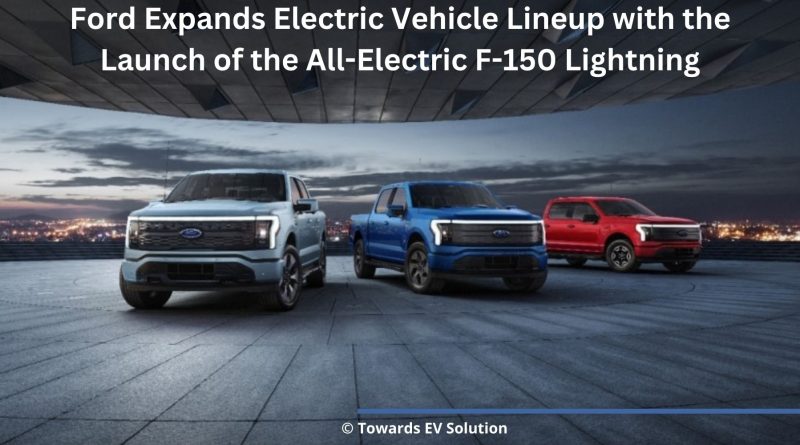Ford Expands Electric Vehicle Lineup with the Launch of the All-Electric F-150 Lightning
Ford has officially launched the all-electric F-150 Lightning, marking a significant milestone in its electrification strategy. The car giant ford has now unveiled the F-150 lightning an all-electric ford truck as part of its renewed electrification push. The F-150 Lightning is positioned as an electric vehicle with features inspired by the ambition of traditional truck lovers and environmentalists.
Electric Vehicle Market Size
According to Precedence Research’s report on the global electric vehicle market size was valued at USD 317.26 billion in 2024 and is expected to grow from USD 393.42 billion in 2025 to approximately USD 2,108.80 billion by 2033. The sector is growing at a double-digit CAGR of 23.42% from 2024 to 2034.
Key Features of the Ford F-150 Lightning
- Power and Performance: The F-150 Lightning features dual electric motors that provide up to 580 horsepower and can tow up to 10,000 pounds, catering to the needs of truck users while ensuring electric performance.
- Range and Charging: Equipped with a 98 kWh or 131 kWh battery, the F-150 Lightning offers a targeted range of 230 miles to 320 miles, depending on the battery option selected. It can be charged using a standard 120V outlet or a Ford Charge Station Pro for faster DC charging.
- Advanced Technology: The vehicle is equipped with Ford’s latest SYNC 4A infotainment system, featuring a 15.5-inch touchscreen, advanced driver assistance systems, and over-the-air updates.
Ford has declared plans to invest USD 50 billion into electric vehicle production in the next ten years, and through 2026 to be precise. The company has a plan to reach total electric vehicles manufacturing capacity of 600000 units by 2024, and by 2030 the electric vehicle sales contribution to the total sales should be 40%.
Ford’s Commitment to Electrification
Ford has announced plans to invest $50 billion in electric vehicle development through 2026. The company aims to achieve an annual production capacity of 600,000 electric vehicles by 2024, and by 2030, it targets 40% of its global vehicle sales to be all-electric.
- Sustainability Goals: Ford is working towards carbon neutrality globally by 2050, with an emphasis on sustainable materials and production processes. The F-150 Lightning incorporates recycled materials and features an environmentally friendly design.
- Charging Infrastructure: Ford has partnered with Blink Charging and Electrify America to enhance charging accessibility, ensuring customers have access to over 63,000 electric vehicle charging stations across North America.
Government policies are playing a crucial role in boosting EV adoption. In the United States, the Inflation Reduction Act provides incentives of up to $7,500 for qualifying electric vehicles. Additionally, many states offer rebates and incentives to encourage EV purchases.
Electric Vehicles Incentives in Key Markets (2024)
| Region | Purchase Incentive (USD) | Charging Infrastructure Support | Additional Benefits |
| United States | Up to $7,500 | $5 billion investment in charging | State-level rebates |
| European Union | Up to $8,000 | 1 million charging points by 2025 | Tax exemptions |
| China | Up to $9,000 | Rapid charging infrastructure expansion | Subsidies for local production |
| Canada | Up to $5,000 | Investments in charging stations | Provincial incentives |
It is projected that the Ford F-150 Lightning open a new chapter in the need for electric vehicles with Ford spurring the growth of its market share. Due to the technological developments in battery manufacturing and growth of the consumer’s sensitivity to ecological problems the global electric vehicles market is expected to experience significant growth.
Meet Radheckaa, a dynamic force in the world of EV industry news and content. With a master's degree in English literature and years of immersive experience as a writer, Radheckaa brings a rare blend of creativity, depth, and expertise to every piece she pens. Her special passion for the automotive industry shines through in her work, where she explores the fast-evolving world of electric vehicles with a sharp eye for detail and innovation.
Her ability to weave storytelling into factual content ensures readers are not only informed but also intrigued. This unique skill set positions Radheckaa as a thought leader, someone who doesn’t just report on the EV industry but explores its broader implications, sustainability, innovation, and the future of mobility.



